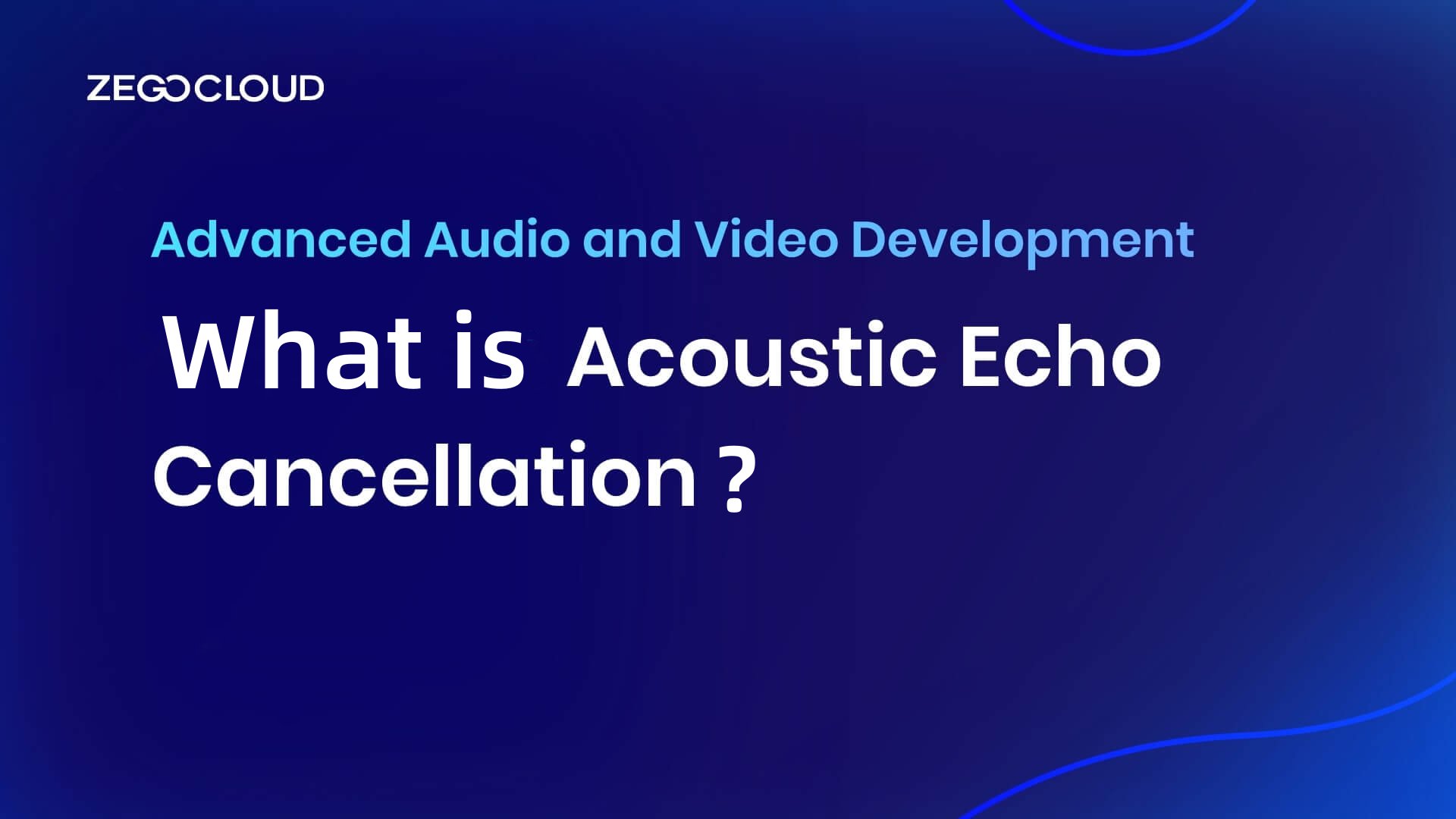Acoustic Echo Cancellation (AEC) is essential for enhancing audio clarity in communication systems, particularly in video conferencing and telephony. By using advanced algorithms, AEC effectively distinguishes between the speaker’s voice and unwanted echoes, eliminating disruptive feedback. This technology significantly improves user experience, ensuring seamless and clear conversations across various platforms. As remote communication becomes more prevalent, AEC plays a vital role in maintaining sound quality and facilitating effective interactions.
What is Acoustic Echo Cancellation?
Acoustic Echo Cancellation (AEC) is a technology designed to improve audio clarity in communication systems by eliminating unwanted echoes that occur during conversations. This echo typically arises when sound from a speaker is picked up by a microphone, creating a feedback loop that disrupts communication. AEC uses advanced algorithms to analyze audio signals and distinguish between the desired speech and the echo, effectively removing the latter from the audio output.
AEC is particularly important in applications like video conferencing, telephony, and live streaming, where clear audio is critical for effective interaction. By ensuring that only the speaker’s voice is transmitted, AEC enhances the overall user experience, making conversations more natural and engaging.
Why is Acoustic echo cancellation critical?
Acoustic Echo Cancellation (AEC) is critical for several reasons, particularly in enhancing communication quality in various applications. Here are the key reasons why AEC is essential:
- Improved Clarity in Communication: AEC significantly enhances audio clarity by eliminating disruptive echoes that can confuse speakers and listeners during conversations. This clarity is especially important in environments like video conferencing and telephony, where clear communication is vital for effective interaction.
- User Experience Enhancement: By reducing echo, AEC contributes to a more natural and engaging conversation experience. This is crucial for maintaining user attention and satisfaction, especially in remote communication settings where participants may feel isolated.
- Professional Quality in Telecommunication: In business settings, where professionalism is paramount, AEC helps maintain a polished audio quality that reflects positively on organizations. Clear audio without echoes can enhance the perceived quality of service during calls and meetings.
- Adaptability to Acoustic Environments: AEC systems are designed to adapt to various acoustic conditions, ensuring effective performance in different settings, such as conference rooms, home offices, or public spaces. This versatility makes AEC applicable across a wide range of scenarios.
- Support for Advanced Applications: As technology advances, AEC is increasingly important for applications in virtual reality (VR), augmented reality (AR), and live streaming, where real-time audio clarity can significantly affect the overall user experience .
Acoustic Echo vs Room Echo
Acoustic Echo and Room Echo are related concepts in the field of sound and acoustics, but they refer to different phenomena.
| Aspect | Acoustic Echo | Room Echo |
|---|---|---|
| Definition | Occurs when sound from a speaker is captured by a microphone, creating a feedback loop. | Natural phenomenon caused by sound reflections off surfaces in an enclosed space. |
| Source | Primarily a technical issue in communication systems. | Result of sound waves bouncing off walls, ceilings, and floors. |
| Impact | Disrupts communication clarity, causing confusion during calls. | Affects the overall sound experience; and can enhance or muddy audio quality. |
| Solutions | Managed using technologies like Acoustic Echo Cancellation (AEC). | Addressed with acoustic treatments, such as sound-absorbing materials. |
| Common Contexts | Video conferencing, telephony, and live streaming. | Concert halls, auditoriums, and everyday rooms. |
How Does Acoustic Echo Cancellation Work?
Acoustic Echo Cancellation (AEC) is essential for enhancing audio clarity in communication systems by removing unwanted echoes. AEC works through several key processes:
When a user speaks into a microphone, their voice is captured along with any sound from a speaker. If the speaker’s volume is too high, the microphone can pick up this sound, creating disruptive echoes. AEC addresses this issue with advanced real-time audio processing algorithms.
The technology employs adaptive filtering to model the echo path. It continuously adjusts the filter parameters to predict and isolate the echo from the original audio signal. By comparing the captured sound with the expected output, the system identifies any present echoes.
Once detected, the AEC system suppresses the echo by subtracting it from the audio stream, resulting in a clearer signal that primarily features the speaker’s voice. This system adapts to changing acoustic conditions, ensuring effective performance in various environments.
AEC is widely used in telecommunications, video conferencing, and audio streaming, significantly improving voice communication quality and enhancing user experience.
ZEGOCLOUD’s Acoustic and Room Echo Cancellation: Key to Seamless Communication
In real-time communication, audio clarity greatly impacts user experience. Acoustic Echo Cancellation (AEC) technology of ZEGOCLOUD eliminates unwanted echoes that disrupt conversations during video calls, voice chats, and live streaming. By employing advanced algorithms, ZEGOCLOUD effectively separates the desired audio signal from echoes caused by sound reflections.

This technology enhances communication quality, allowing users to interact without distractions from echoing sounds. ZEGOCLOUD also addresses room echo, a challenge in enclosed spaces where sound waves reflect off surfaces, complicating audio clarity.
By integrating AEC and room echo cancellation, ZEGOCLOUD offers a comprehensive solution for clear and engaging conversations. This makes it essential for businesses and individuals who depend on high-quality audio communication.
For more information about ZEGOCLOUD’s technology, visit their official website or explore resources discussing the significance of echo cancellation in communication systems.
Conclusion
In summary, Acoustic Echo Cancellation (AEC) is essential for enhancing audio clarity in communication systems. By effectively removing unwanted echoes, AEC ensures that conversations remain clear and natural, which is vital in video conferencing, telephony, and live streaming. As digital communication continues to grow, AEC will play a crucial role in providing seamless interactions and improving user experiences.
Read more:
FAQ
Q1: Where is Acoustic Echo Cancellation commonly used?
AEC is widely used in various applications, including telecommunications, video conferencing, and audio streaming. It is essential for enhancing audio quality in services like VoIP calls, online meetings, and live broadcasts, where clear communication is critical for effective interaction.
Q2: What are the benefits of using Acoustic Echo Cancellation?
The main benefits of AEC include improved audio clarity, enhanced user experience, and reduced distraction from echoes during conversations. By eliminating echoes, AEC helps maintain a natural flow of communication, making it easier for users to understand each other. This technology is especially beneficial in environments where multiple audio sources are present.
Q3: What challenges are associated with Acoustic Echo Cancellation?
One challenge of AEC is its effectiveness in varying acoustic environments. Factors such as room size, speaker placement, and microphone sensitivity can affect performance. Additionally, AEC systems must continuously adapt to changes in sound dynamics, which can complicate the implementation of effective echo cancellation algorithms. Ensuring reliable performance across different conditions remains a key focus in the development of AEC technology.
Let’s Build APP Together
Start building with real-time video, voice & chat SDK for apps today!










